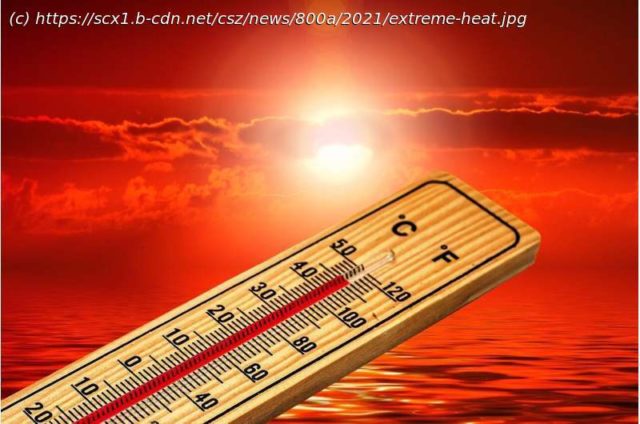Every year, an estimated 600 people in the U.S. die in extreme heat waves. Nearly 10,000 are hospitalized and more than 67,000 visit emergency rooms. This year, record-smashing heat waves have swept across the southwestern United States, which has sweltered under temperatures above 100 degrees for weeks. In July, excessive heat warnings were announced for many western U.S. states, Texas and some of Florida.
Every year, an estimated 600 people in the U.S. die in extreme heat waves. Nearly 10,000 are hospitalized and more than 67,000 visit emergency rooms. This year, record-smashing heat waves have swept across the southwestern United States, which has sweltered under temperatures above 100 degrees for weeks. In July, excessive heat warnings were announced for many western U.S. states, Texas and some of Florida.
In the last century, temperatures have risen 1.5 degrees and modeling efforts suggest that temperatures will continue to rise 2.5 degrees in the next few decades. Extreme heat can wreak havoc on the body’s ability to cool itself, which can lead to heat related illnesses and death.
Staying inside is one of the best protections against extreme heat, especially for older and medically vulnerable people. At Pacific Northwest National Laboratory (PNNL), researchers study technologies and provide comprehensive guides to homeowners that can help keep buildings cool. Whether you own or rent, there are ways to upgrade your house or apartment to stay safe in extreme heat.
Good news: one of the main ways homes heat up is also the easiest to counteract.
„The biggest source of heat gain in most homes is the sun’s heat coming through windows,“ said Christian Kaltreider, a systems engineer at PNNL who studies energy efficiency in buildings. „Addressing that first is a major key to preparing for an extreme heat event or weathering an ongoing heat wave.“
That means covering windows, both inside and out. PNNL researchers have found that all types of interior windows coverings, from drapes to films to blinds, can keep out direct sunlight, but some are better than others. For example, insulated cellular shades cut air conditioning (AC) use 13% compared to vinyl blinds and up to 25% compared to no window coverings, said Theresa Gilbride, a building efficiency researcher at PNNL.






